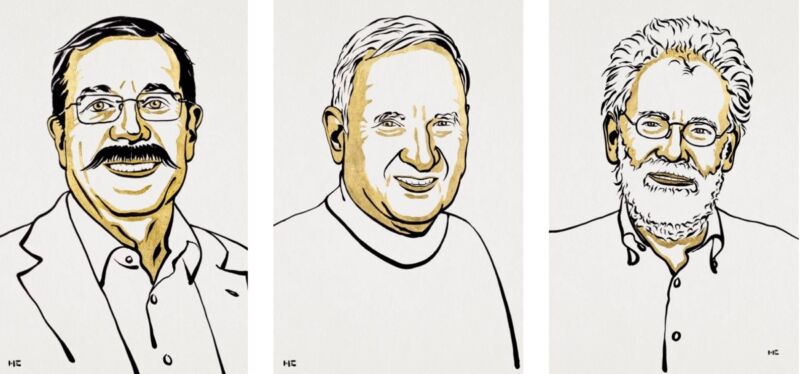2022 Nobel Physics Prize goes to seminal tests of spooky action at a distance

Enlarge / The 2022 Nobel Prize in Physics goes to Alain Aspect, John F. Clauser, and Anton Zeilinger, "for experiments with entangled photons, establishing the violation of Bell inequalities and pioneering quantum information science." (credit: Niklas Elmehed/Nobel Prize Outreach)
Cornell University physicist N. David Mermin once described quantum entanglement as "the closest thing we have to magic," since it means that disturbances in one part of the universe can instantly affect distant other parts of the universe, somehow bypassing the cosmic speed-of-light limit. Albert Einstein memorably dubbed it "spooky action at a distance." Today, The Royal Swedish Academy of Sciences honored three physicists with the 2022 Nobel Prize in Physics for their work on entanglement. Alain Aspect, John F. Clauser, and Anton Zeilinger were recognized "for experiments with entangled photons, establishing the violation of Bell inequalities and pioneering quantum information science."
When subatomic particles interact, they can become invisibly connected even though they may be physically separated. So knowledge about one partner can instantly reveal knowledge about its twin. If you measure the state of one, you will know the state of the other without having to make a second measurement because the first measurement determines the properties of the other particle as well.
There are many different ways particles can become entangled, but in every case, both particles must arise from a single "mother" process. For instance, passing a single photon through a special kind of crystal can split that photon into two new "daughter" particles. We'll call them "green" and "red" (shorthand for more abstract particle properties like spin or velocity). Those particles will be entangled. Energy must be conserved, so both daughter particles have a lower frequency and energy than the original mother particle, but the total energy between them equals the mother's energy. We have no way of knowing which is the green one and which is the red. We just know that each daughter photon has a 50-50 chance of being one or the other color. But should we chance to see one of the particles and note that it is red, we can instantly conclude that the other must be green.